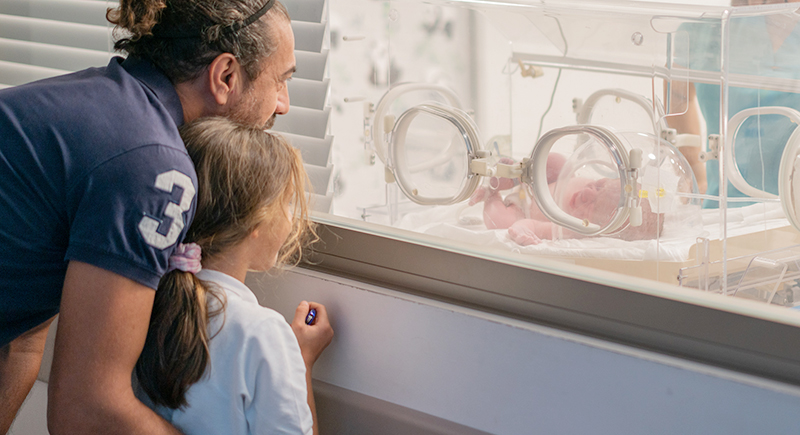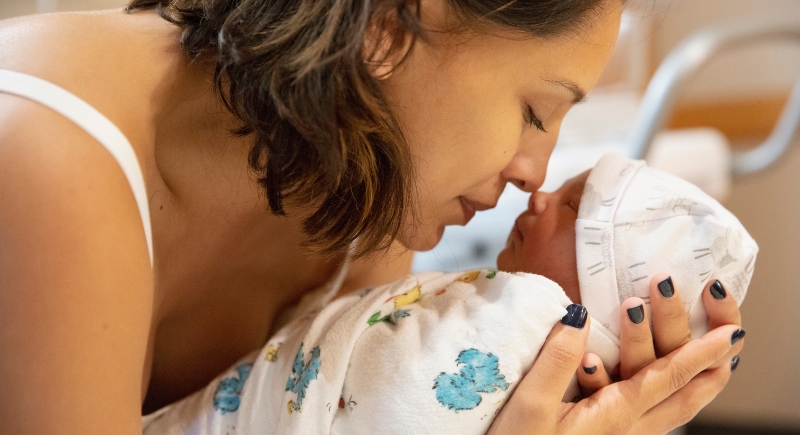What Happened to Baby Viewing Windows in Hospitals?
For much of the 20th century, hospital nurseries featured long rows of bassinets behind large glass windows. Families viewed newborns from the hallway because fathers were barred from delivery rooms and mothers were kept in recovery. These viewing windows became a cultural symbol, but in modern hospitals, they’ve almost entirely disappeared.
So, what happened?
The Origins of Baby Viewing Windows

Image via iStockphoto/mgstudyo
Baby viewing windows first appeared in hospitals during the early 20th century, when childbirth was shifting from homes to medical facilities. Hospitals created nurseries to separate babies from their mothers, claiming it kept things sanitary. Large windows allowed relatives to see newborns without touching them, but there was another, more significant motive as well.
Hospitals liked to show off. Rows of healthy babies behind glass reassured families that their facility was a safe and trustworthy place. In fact, the 1943 “Standards and Recommendations for Hospital Care of Newborn Infants” even required viewing windows.
For many dads, the nursery window was the only chance to meet their baby before going home. Some hospitals even marketed them as “Baby Showcases.” Ads and photos from the mid-1900s turned that scene into a cultural icon. One LIFE magazine ad for Prudential Insurance featured a proud father gazing at his newborn through the glass, with a tagline about looking into the future.
Shift Towards Rooming-In
By the 1970s, hospitals started rethinking this setup. Research has shown that babies staying in the same room as their mothers, known as rooming-in, is beneficial for bonding and breastfeeding. Mothers also felt more confident caring for their babies right away.
Slowly, the old nursery windows started to feel outdated. By the 1990s, growing security concerns sped up the change. Hospitals realized that putting babies on public display made families uneasy, especially as stories of infant abductions made headlines.
The World Health Organization added momentum in 1991 with its Baby-Friendly Hospital Initiative, which promoted keeping mothers and babies together around the clock. Soon, many hospitals closed their nurseries completely. Instead of peering at babies behind glass, families began meeting them in the intimacy of private rooms.
Some Parents Still Miss Them

Image via Getty Images/SelectStock
Although the shift has been positive for bonding, not everyone is pleased. New parents often complain about exhaustion, especially after long labor or C-sections. In the past, nurses could watch babies overnight so mothers could rest, then bring them back for feedings.
Today, with rooming-in policies, that option is rare. Some hospitals maintain small nurseries for exceptional cases, but large windows for public viewing are almost nonexistent.
A recent Reddit thread revealed that mixed feelings persist. Parents praised the closeness of having their babies in the room, but admitted they wished they had the choice of a nursery break. Nurses in the discussion also pointed out that hospitals liked the baby-friendly model because it meant fewer staff were needed.
Windows to Websites
Parents no longer introduce their babies through hospital nursery windows, but the tradition of sharing hasn’t disappeared. Today, many families use online photo galleries instead. Some hospitals even offer secure online galleries where families can view newborn portraits. Parents receive a private login, which lets relatives see the photos without needing to visit the hospital in person.